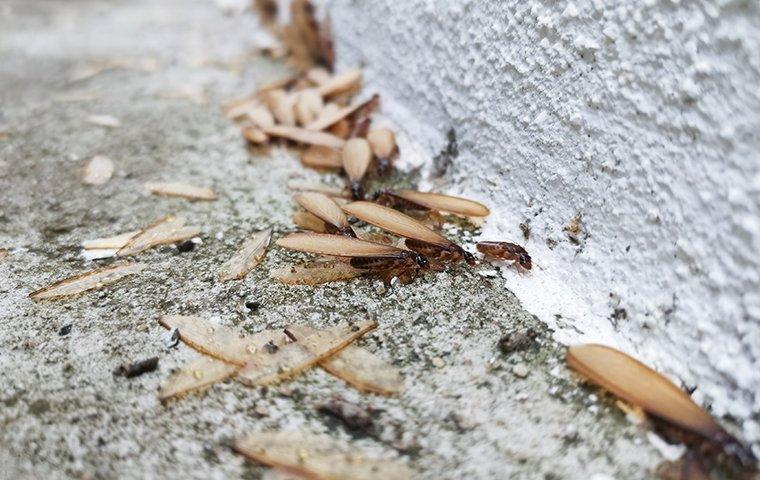For everything, there is a season. Even termites. These subterranean insects come into season when it’s not too hot and not too cold. In the Hudson River Valley, that means you’re more likely to see more termite activity during the spring months.

But you won’t observe them munching away on the wood in your home. The worker termites that forage wood for the colony stay hidden underground or inside wooden structures all year long. Instead, you may see the winged alates, or reproductive termites, swarming outside their nest.
What Is Termite Season?
In central New York, we have primarily Eastern subterranean termites. They spend most of their time underground where the queen lays huge clusters of eggs.
After the eggs hatch, the nymphs develop into one of three different types of termites:
- Worker
- Soldier
- Reproductive
The queen secretes pheromones that dictate the development of the nymphs, ensuring there’s enough of each kind to support the colony. Workers are about ¼-inch in length and cream-colored. Soldiers are the same size and color but have large mandibles and darker-colored heads.
Unlike their sisters and brothers, reproductive termites are dark brown or black and have two pairs of translucent wings. The wings allow them to leave the nest in search of mates and new locations to establish colonies. Hundreds and possibly thousands of reproductive termites may swarm, depending on the size and age of the colony. Remember – there’s technically no beginning or an ending date for termite season, but Eastern subterranean termites generally begin to swarm in April.
Signs Of Termite Problems
After mating, reproductive termites lose their wings. These wings are a sign that you may have a termite problem in the Hudson Valley. If you have an infestation in your home, you may actually see the termites swarming through a small hole in the wall. If the colony is nearby, you may notice the swarming activity outside. It’s important to take note of their presence as termites could see your home as a food source.
The following things may attract termites to your home:
- Moist, water-damaged wood
- Cracks in foundations
- Leaks in roofs or water pipes
If you don’t see signs of termite swarmers, you may also notice an accumulation of mud or dirt near the wood the termites are eating. These insects build mud tubes to travel between their food source and the colony. You may also see holes or damage to the wooden parts of your home. If you do notice damaged wood, keep in mind that subterranean termites eat “with the grain” instead of across the grain.
Termite Damage in The Hudson Valley
Subterranean termites cause billions of dollars in damage to homes and businesses each year. Remember that a termite colony is always active, and termites eat constantly. While they do not bite or sting humans, they can cause structures to become unstable. If the damage is serious enough, electrical fires could occur or a floor could collapse. That’s why it’s vital to be proactive about termite prevention in central New York.
The more you can do to prevent termites from establishing a colony at your home or business, the better. Once in place, termites can do significant damage. If you notice signs of a termite swarm in or near your home, contact Pestmaster® Services for treatment.
It’s important to have an annual termite inspection by a qualified pest control professional in case you miss signs of termites at your home. Pestmaster® Services offers yearly termite inspections in the Hudson Valley. Call today to schedule your annual termite inspection and gain peace of mind that your home is safe and secure.
.png)
